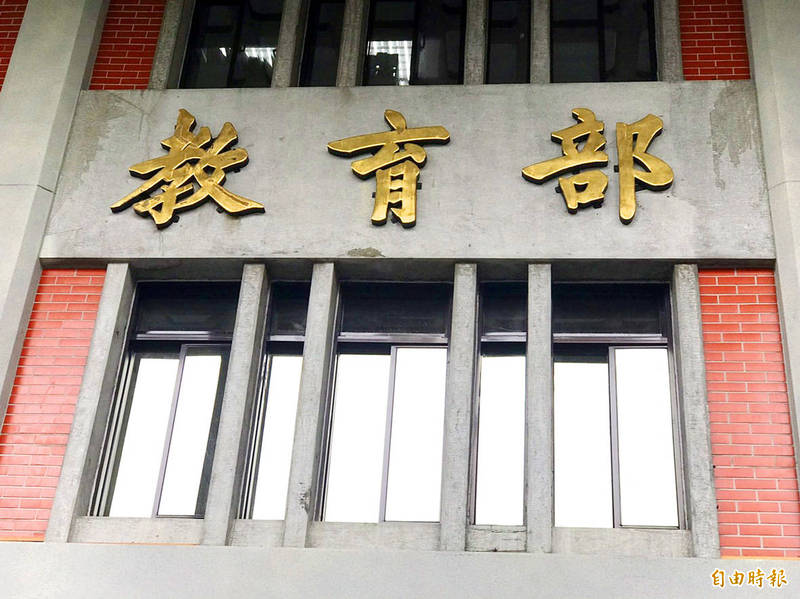《TAIPEI TIMES》 New college pupils continue to drop

An entrance to the Ministry of Education in Taipei is pictured in an undated photograph. Photo: Rachel Lin, Taipei Times
BIRTHRATE DECLINE: Opportunities to enter top universities would increase, but universities would have to consider the quality of students they would be acquiring
By Yang Mien-chieh and Rachel Lin / Staff reporters
The number of first-year college and university students is expected fall below 200,000 this academic year, and continue to drop by an average of 3,400 per year for the next 16 years, due to the nation’s declining birthrate, the Ministry of Education said in a report on student numbers yesterday.
Before the 2016 academic year, when student numbers were not affected by the low birthrate, the number of first-year students was about 270,000 to 278,000 each year, but dropped to about 255,000 in 2016 and about 241,000 in 2017, a reduction of 11 percent in two years, the report said.
The number of first-year students is expected to fall below 200,000 starting in the 2023 academic year, it said.
The number of first-year students is expected to fall as low as 157,000 in the 2028 academic year, as they would mostly have been born in the Year of the Tiger, which is considered an inauspicious year to give birth, the report said.
However, the figure might grow to 189,000 in the 2030 academic year, as incoming students would mostly be born in the Year of the Dragon and the Republic of China centennial, the report said.
However, the number of first-year students would continue to decline overall, dropping to about 147,000 in the 2038 academic year, down 26.8 percent from the 2022 academic year or an average drop of 3,400 students per year over the next 16 years.
The total number of college and university students was about 1.11 million to 1.14 million before 2016, but is expected to fall below 900,000 in the 2024 academic year, and to as low as 766,000 in the 2029 academic year.
The number of college and university students could drop to about 719,000 in the 2038 academic year, or an average decline of 14,000 students per year over the next 16 years.
However, the declining birth rate means that opportunities to enter the nation’s top universities would increase, the report said.
Unews.com.tw, an online platform for students applying to universities, said that the acceptance rate into top universities for those who wrote the General Scholastic Ability Test (GSAT) this year was more than 10 percent, meaning that out of every 10 test candidates, one could enter a top university, and students with a total GSAT score in the top percentile would be expected to be able to enter a top university.
The acceptance rate into top universities for students who wrote the GSAT was 10.53 percent last year and 10.35 percent this year.
U News chief executive officer Wei Chia-hui (魏佳卉) on Friday said the number of students who took the GSAT has dropped by nearly 20,000 over the past five years, and the figure is expected to decline by an average of 3,000 to 5,000 per year over the next five years, so the university acceptance rate is expected to increase to about 12 or 13 percent.
For students and their parents it might be a good news, but for the universities themselves, as the total enrollment for undergraduate programs would not be not reduced, the quality of students might decline, she said.
As a result, top universities might have to readjust to provide more courses that enhance their first-year students’ fundamental abilities, which would reduce the time professors are able to spend on academic research, and in turn, might affect universities’ research capacity, she said.
Top universities could consider reducing the total number of students allowed to enroll in their undergraduate programs and strive to attract high-quality students, locally or from abroad, in a bid to maintain a balance between teaching and research, and global competitiveness, Wei said.
新聞來源:TAIPEI TIMES

















